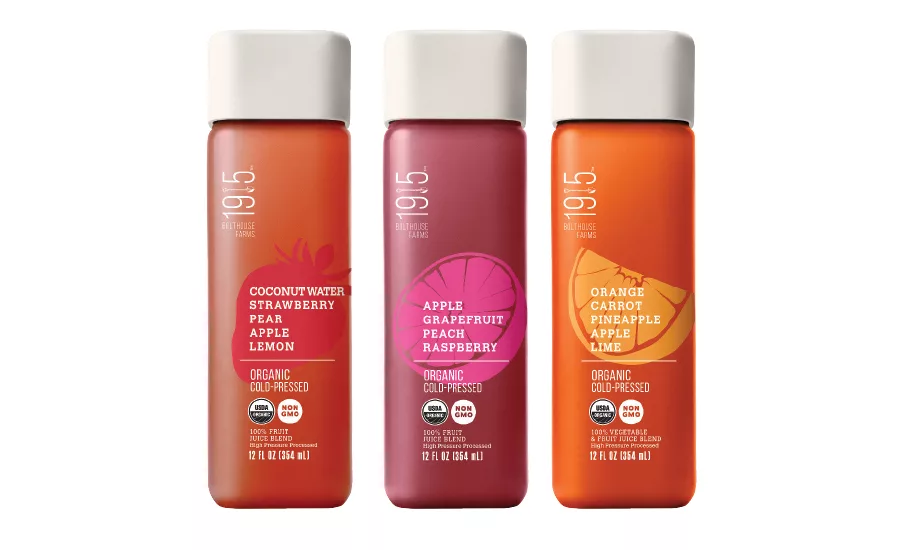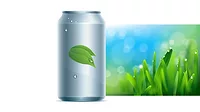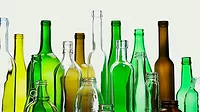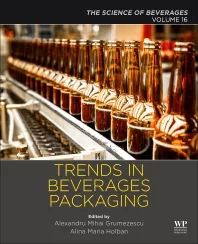Sustainability, on-the-go drive glass, aluminum, PET packaging
Formats offer options for unique on-self presence for beverages



Although suppliers are innovating emerging packaging materials, like pouches and cartons, glass, aluminum and plastic, namely PET, continue to remain dominant in the beverage industry. In addition to the product protection that these packages provide, they’re also offering beverage-makers several other benefits.
Among the traits that these packaging materials have is sustainability. Although they differ in their overall carbon footprints, glass, aluminum and plastic packaging formats offer sustainable benefits that consumers easily recognize, experts note.
“We know that more and more, consumers care about sustainability,” says Elizabeth Peery, marketing communications manager at Perrysburg, Ohio-based Owens-Illinois (O-I). “Glass bottles are a great option for sustainability for a number of reasons. When you look at the complete lifecycle of a package, from raw material extraction to recycling or end-of-life disposal, the average glass bottle has a carbon footprint that is lower than or on par with comparable aluminum and PET containers.”
She highlights that the materials used to make glass bottles — sand, limestone and soda ash, as well as recycled glass — are abundant, natural raw materials that can be locally sourced.
Lightweighting of glass bottles also has historically been used by glass manufacturers, according to Peery. “Glass bottle weight has been reduced by about 40 percent over the past 30 years, according to the Glass Packaging Institute,” she says. “It’s important to note, however, that weight does not have an outsized impact on the sustainability of glass bottles. O-I’s complete lifecycle assessment found that transportation of finished products accounts for less than 5 percent of a packaging material’s total carbon footprint. The advantage of lightweighting is that it reduces the amount of raw materials needed to make the bottle.”
Aluminum cans offer a variety of sustainable benefits for beverage brands as one of the most recycled materials, according to Melanie Edwards Virreira, director of marketing for Ball Beverage Packaging, North & Central America at Ball Corp., Broomfield, Colo. “Cans are among the most recycled beverage packages in the world and drive almost all of the value in the packaging recycling system,” she says. “Sustainability-conscious consumers understand this, and cans, overall, are growing as a share of beverage packaging.”
Aluminum cans contain an average of 70 percent recycled content, according to Sherrie Rosenblatt, vice president of marketing and communications at the Washington, D.C.-based Can Manufacturers Institute (CMI). “The infinite recyclability of cans is a benefit to beverage companies and their customers, who have a strong interest in choosing packages that are sustainable,” she says.
According to John Maddox, president of SBAcci, Jacksonville, Fla., PET is the most prominently used resin for beverage packaging. It also is the most recycled plastic, says John Cullen, director of PET resin sales and marketing at Charlotte, N.C.-based DAK Americas.
However, Nicholas Bloch, executive vice president of communications at Hünenberg, Switzerland-based Sidel, notes that recycling rates of PET bottles need to increase in order to further the use of recycled PET (rPET).
“The recycling of PET is certainly crucial in enhancing its position as a sustainable material. Producing virgin PET requires the use of resources [that] are finite, so adopting processes [that] allow it to be 100 percent recycled are key,” he explains. “Analysis has shown that the recycling of PET uses two-thirds less energy than that required to manufacture virgin PET, demonstrating the clear environmental benefits of the process. Currently, the greatest barrier to adoption of rPET is the lack of availability of quality rPET, with demand outstripping supply.
“The emphasis of collecting bottles needs to continue, with commitments to further improving collection rates. The technological advances being made to optimize the use of bottles also needs to be encouraged, building on the new filtration processes being adopted to generate PET flakes in a way [that] is both more eco-friendly and more cost effective,” Bloch continues. “This will enable the production of more new bottles from rPET, and also will allow the recycled PET flakes to be used in a wide range of other applications. Despite the challenges of sourcing rPET, many of the major beverage brand owners are committed to increasingly adopting it in their bottling processes, with some already achieving usage levels in excess of 50 percent for certain product lines.”
He also highlights the steps that are being taken to further innovate PET as a sustainable packaging material. “As a lightweight material, PET already provides significant environmental advantages in terms of lower transportation costs and reduced fuel emissions,” Bloch says.
On-the-go solutions
PET and aluminum packaging materials share the benefits of the growing number of out-of-home consumption occasions available to consumers, experts say. As consumers continue to look for products that meet their on-the-go needs, beverage-makers can benefit from utilizing durable, portable packaging.
“Depending on the beverage, consumers’ drinking location habits are shifting,” CMI’s Rosenblatt explains. “For example, millennials are more likely to consume coffee outside of home relative to previous generations. Ready-to-drink coffee beverages have experienced significant growth in the past few years due to their convenience and portability. The tactile, aroma and 360-degree branding benefits delivered via aluminum beverage cans enhance the cold coffee drinking experience.
“When it comes to craft beer drinkers, there has been an uptick in nontraditional drinking occasions and [a] decline in drinking occasions at a restaurant or bar,” she continues. “The portability and safety of aluminum beverage cans make them the optimal packaging for such occasions as festivals and outdoor events.”
Ball’s Edwards Virreira adds that aluminum cans and non-traditional drinking occasions go hand-in-hand. “Aluminum packaging — bottles, cans and ends — create more occasions for consumers to enjoy their favorite beverages,” she says. “Cans and [aluminum] bottles can go where glass can’t go — beaches, parks, etc. They don’t break. Cans and [aluminum] bottles are lightweight and come in a variety of sizes that are easy to pack in and pack out on the hiking and biking trail, or on picnics.”
Additionally, the development of recloseable aluminum packages, like Ball’s Alumi-Tek bottles and Cap Cans, also has allowed for more portability, she says.
DAK Americas’ Cullen highlights the on-the-go benefits of plastic packaging, including its durability and reseal-ability. “Plastic bottles offer [the] performance and convenience that consumers demand. The simple fact that plastic containers are almost universally designed to be resealed is a big advantage,” he says. “The ease of transportation with almost no chance of breakage means you can safely carry a beverage or food while traveling with no chance of an inconvenient spill.”
Sidel’s Bloch adds that with the growth of on-the-go convenience, consumers also are looking for smaller package sizes, allowing them to take products to more places.
Creative designs
Beyond product containment, aluminum, glass and plastic packaging formats also provide numerous opportunities for package design, and in an industry experiencing exponential SKU growth, having a unique package is important, experts note.
“Customers are reaching out to O-I for innovative designs that differentiate their product,” O-I’s Director of Design Raul Paredes says. “As many new products hit the market each year, brand owners are looking for ways to stand out. This is true across a variety of categories, from spirits to craft beer to non-alcoholic drinks.
“Glass provides unlimited flexibility and endless possibilities for design,” he continues. “Glass can be molded into virtually any shape and enhanced with texture, embossing and decoration. It can have in-molded color that permeates the container. It accommodates an endless array of closures and presents extensive labeling and branding opportunities.”
Peery adds that glass also plays well in the premium space, particularly as higher-end products are proliferating. “Glass naturally conveys a premium image, so it’s a great option for helping beverage-makers satisfy this desire among consumers. And consumers know the best products come in glass — 90 percent of consumers favor glass because it preserves the taste or flavor of the products it contains,” she says, citing data from Ecofocus.
Glass has experienced success in various premium and ultra-premium categories, Peery notes. She highlights that spirits has been an especially prosperous market for the packaging material, but better-for-you non-alcohol options also are utilizing glass.
“We are also seeing growth in natural and functional beverages, and glass is a great choice for these products as well,” she says. “Glass requires no plastic or chemical liner that can interact with food and beverages, so it naturally appeals to consumers who are concerned about health and provides great protection for natural products like juices and brewed teas. Glass is also great for products with active fermentation, like kombucha.”
Aluminum cans offer the capability for 360-degree graphics and the benefit of quick chilling, Ball Corp.’s Edwards Virreira says. “Designers are always pushing the envelope on packaging design, and cans are delivering more and more possibilities. The craft beer segment has taken full advantage of our high-resolution technology Eyeris to make a real impact on shelf. The realistic imagery or highly detailed artistic renderings turn packaging into a work of art. That’s also true for can shaping, especially with the growing popularity of metal bottles and features such as inks you can feel.”
CMI’s Rosenblatt echoes similar sentiments, highlighting that the format allows for storytelling and connectivity with the consumer. “Aluminum beverage cans are enjoying a surge in interest as beverage brands seek to connect with today’s consumer through storytelling and associate with their brand,” she says. “That has led brands across a variety of beverage categories to aluminum packaging, which offers a 360-degree canvas that is an ideal printable surface for brand visuals to capture consumer attention.
“Additionally, the continuing growth of can share in the craft beer industry has led to an adoption of the can in other higher-end, specialty beverage segments — such as wine and ready-to-drink (RTD) coffee and tea — based on increased awareness of the can as an ideal package to protect against light and air, and therefore preserve product integrity,” she continues.
Although glass and aluminum have achieved success in the premium category, PET is gaining there as well, according to SBAcci’s Maddox. He notes that the material has made an impact in the premium dairy and juice categories, as the clear packaging allows consumers to see the freshness of the product. BI
Looking for a reprint of this article?
From high-res PDFs to custom plaques, order your copy today!





